The 2012 MacBook Air (11 & 13-inch) Review
by Anand Lal Shimpi on July 16, 2012 12:53 PM EST- Posted in
- Apple
- Mac
- MacBook Air
- Laptops
- Notebooks
Keyboard and Trackpad
The keyboard on the 2012 MacBook Air is the same as the 2011 model. You get a full sized keyboard on both the 11 and 13-inch models, with the alphanumeric keys measuring ~15 x 15mm. The function keys are half height on the 13 and even smaller on the 11, but there's no sacrifice in key size otherwise. Key travel and physical feedback are both as good as they can get on a chiclet-style keyboard. As Apple has now fully transitioned to this style of keyboard across all of its Macs, I can't really say I have any complaints about it. Apple's keyboard remains one of the best on the market.
The dedicated power button from the older Macs is gone and replaced with a power key that looks like another function key. The power key is functionally no different than the old power button - tap to turn on, hold to power down in the event of a hard lock.
The 2012 keyboard is nicely backlit, just like on every MacBook Air but the 2010. Apple offers fine grained controls over the keyboard backlight (16 adjustable levels). You can either choose to control it on your own or let the ambient light sensor control the intensity of the keyboard's backlight.
We spend so much time pointing out poor clickpads in the latest Ultrabooks that it's important to mention just how good the clickpad is in the MacBook Air. Apple continues to use the top hinged design on its glass covered clickpad. Clicks are easier towards the bottom of the pad than at the top where the hinge is. The clickpad is glass covered which makes it very smooth and comfortable to use. Finger rejection is handled extremely well under OS X, accidental clicks are very rare. I typically keep my thumb on the clickpad, near where the right mouse button would traditionally be, and mouse around with my index finger. While I normally have issues with this usage model on most of the clickpads I use, Apple's implementation is both the exception and the benchmark. It just works.
USB 3.0 Performance
USB 3.0 is alive and well on the new MacBook Air. Both ports support the standard and both OS X and the hardware supports the USB Attached SCSI Protocol (UASP). I have noticed that USB device compatibility is more finicky on the MacBook Air compared to the rMBP. Most devices seem to work fine but Kingston's HyperX Max 3.0 for example wouldn't work, although it worked fine on the rMBP. The hardware is actually detected by OS X, the drive simply never appears to Disk Utility or in Finder. A few folks have noticed something similar with other drives on Apple's support forums but the issue doesn't seem to have widespread implications.
USB 3.0 performance however is just as good as on the rMBP. I still need to grab a UASP enabled USB 3.0 device with 6Gbps SATA support to really stress the interface, but using Seagate's GoFlex USB 3.0 drive and a Kingston HyperX SSD in place of the mechanical drive I'm able to hit around 260MB/s:

Thunderbolt support comes courtesy of a 4-channel Cactus Ridge controller. The Thunderbolt port continues to be on the opposite side of the machine from the power connector. Anyone who owns a Cinema or Thunderbolt Display will bemoan the continued use of this configuration.
FaceTime HD Camera
Last year Apple introduced a 720p FaceTime HD camera to its MacBook Pro. The 2012 MBA inherits the same camera. Image quality remains acceptable as long as you're in a room with not terrible lighting.
Most of the Ultrabooks I play with these days try to mimic the FaceTime HD experience by using a 720p sensor. Arguably just as important as the sensor is the software that goes along with it. Photo Booth and Apple's FaceTime app are both extremely simple and quick to launch. I can't stress the importance of getting little details like this right when selling to general consumers.
SD Card Performance
The SD card reader on the 13-inch MacBook Pro had no compatibility issues with Patriot's EP Pro UHS-I SD card. Max performance of the reader appears to be capped at 40MB/s however:
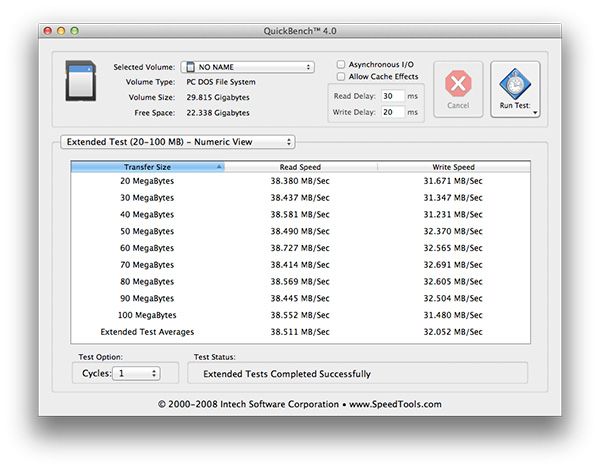
The rMBP by comparison can deliver more than 80MB/s in the read portion of this test. Even writes are faster at ~40MB/s on the rMBP compared to around 32MB/s here. It's a lot of these little things that contribute to the differences between Apple's MacBook Air and Pro lines.
WiFi Performance
Wireless connectivity remains unchanged from last year's model. Broadcom is on 802.11n WiFi duty with its BCM4322. Both 2.4GHz and 5GHz bands are supported. The same 2x2:2 configuration (2 send and receive antennas with 2 spatial streams) remains from last year as well.

I ran the 13-inch MacBook Air through the same three location WiFi test that I put the rMBP and 2011 MBP through, on both 5GHz and 2.4GHz. Performance on 2.4GHz was unusually low on the Netgear WNDR4500 I usually test with (10 - 20Mbps regardless of location) so I had to switch to the previous generation Apple Time Capsule to ensure there was nothing wrong with the notebook itself. All of the 2.4GHz MBA numbers have a star next to them to indicate that they aren't totally comparable as they're using a different AP. The 5GHz numbers all came from the Netgear however.
| Location 1 | Location 2 | Location 3 | |
| 2011 MacBook Pro (2.4GHz) | 124.0 Mbps | 12.6 Mbps | 61.6 Mbps |
| Retina MacBook Pro (2.4GHz) | 117.9 Mbps | 87.6 Mbps | 44.0 Mbps |
| 2012 MacBook Air (2.4GHz) | 95.7 Mbps* | 75.2 Mbps* | 31.2 Mbps* |
| 2011 MacBook Pro (5GHz) | 186.8 Mbps | 154.6 Mbps | 24.7 Mbps |
| Retina MacBook Pro (5GHz) | 227.7 Mbps | 156.8 Mbps | 33.7 Mbps |
| 2012 MacBook Air (5GHz) | 159.4 Mbps | 97.0 Mbps | - |
Overall WiFi performance is decent but obviously not as good as what you get from a MacBook Pro. Looking back at the results I almost wonder if the 2011 MBP wasn't showing some of these weird 2.4GHz issues on the Netgear router as well.
In the best conditions on 5GHz you can hit around 160Mbps, but you pretty much have to be right next to a good AP for that to work. Across a large room or in an adjacent one just under 100Mbps is possible on 5GHz as well. Go further out and you'll have to switch over to 2.4GHz.
There are no wired network options by default, however Apple's Thunderbolt to Gigabit Ethernet adapter works just fine on the new Air as well as the rMBP.
MagSafe 2
MagSafe 2 makes an appearance on the new MacBook Air, although it's curiously absent from the non-retina MacBook Pro. Eventually I'd expect all Macs to use MagSafe 2. The current state of things is likely temporary fragmentation. Similar to the rMBP, the actual power adapters themselves haven't changed: 45W is all you need for both systems.
Ivy Bridge on Air
Apple keeps its CPU options pretty simple and straightforward. You get a choice of three different CPUs, all dual-core, all rated at a 17W TDP. The Core i5-3317U comes standard in the 11, the i5-3427U comes with the 13, and both systems can be upgraded to the Core i7-3667U.
The breakdown between the chips is below:
| Apple 2012 MacBook Air Comparison | |||||
| 1.7GHz dual-core | 1.8GHz dual-core | 2.0GHz dual-core | |||
| Standard On | 11-inch MBA | 13-inch MBA | Optional for Both | ||
| Intel Model | Core i5-3317U | Core i5-3427U | Core i7-3667U | ||
| Base Clock Speed | 1.7GHz | 1.8GHz | 2.0GHz | ||
| Max SC Turbo | 2.6GHz | 2.8GHz | 3.2GHz | ||
| Max DC Turbo | 2.4GHz | 2.6GHz | 3.0GHz | ||
| L3 Cache | 3MB | 3MB | 4MB | ||
| AES-NI | Yes | Yes | Yes | ||
| VT-x | Yes | Yes | Yes | ||
| VT-d | Yes | Yes | Yes | ||
| TDP | 17W | 17W | 17W | ||
| Processor Graphics | Intel HD 4000 | Intel HD 4000 | Intel HD 4000 | ||
| GPU Clock (Base/Max) | 350/1050MHz | 350/1150MHz | 350/1150MHz | ||
The Core i7 upgrade is likely worth it if this is going to be your primary system for an extended period of time, particularly if it's acting as a desktop replacement. As a mobile device the standard CPUs are quite fast. If you're an annual upgrader, save your money, but if you're going to hold onto the system for a while and do a lot of heavy work on it, the upgraded CPU is probably worth it.
There is a known bug with the upgraded CPU under Windows today. Turbo Boost is disabled under Windows on the 3667U, although it's fully functional under OS X. Apple is aware of the problem and I'd expect a fix at some point, but there's no indication of when.


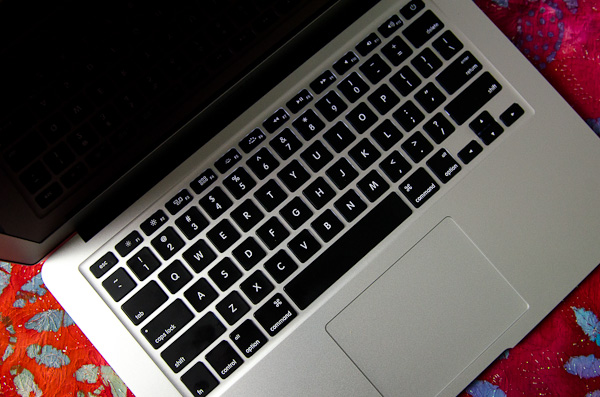
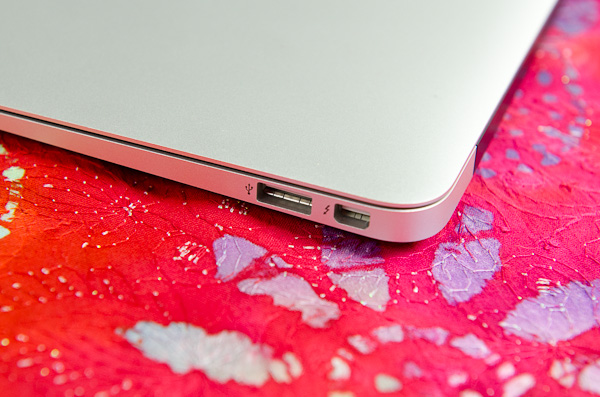

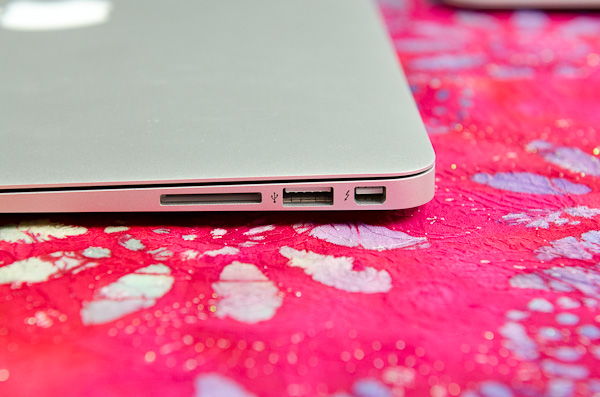
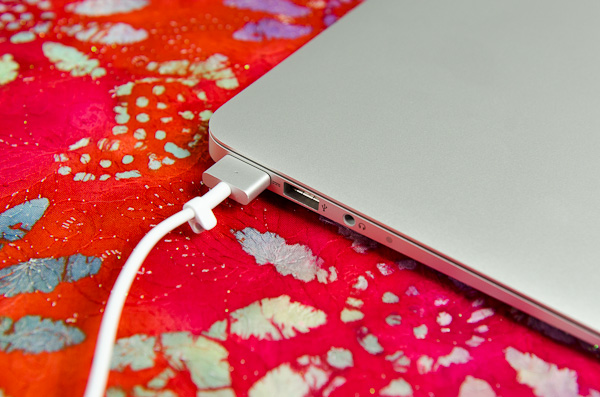








190 Comments
View All Comments
flying_butt_pliers - Monday, July 16, 2012 - link
Wow, superb on the UX32, Anand! Just what I was in the market for. Bonus points if you can run the Photoshop speed test in your review (perty please).I'm currently looking at this beauty to be my desktop replacement (for photo retouching) soon hopefully with a swapped out SSD instead of the hybrid drive and upgraded RAM.
kmmatney - Monday, July 16, 2012 - link
"Similar to the rMBP, the actual power adapters themselves haven't changed: 45W is all you need for both systems. "Nice. My new Ivy Bridge Dell requires a 130W adapter, and gives me an error message and runs at reduced speed with a 90W adapter. These same adapters worked fine on my older, supposedly more power hungry, 17" laptop. Lame.
SodaAnt - Monday, July 16, 2012 - link
Well, it depends on the philosophy of how they design the power adapter. My dell actually has a 180W power adapter, but there's a good reason for it. They designed it for the worst case, where you have to charge the battery at 50W, have full GPU+CPU load, HDD load, burning a DVD, full brightness, and while charging multiple devices. On the other hand, I can't imagine apple's power adapter could handle full charging speed while charging an iPad and handling cpu intensive tasks.KPOM - Tuesday, July 17, 2012 - link
It's partly this "just in case" thinking that can slow progress, particularly in the Windows world. My employer has HP Elitebooks as late as 2011, and they still include VGA and modem ports "just in case" they are needed. VGA I can almost see, but modems?Pessimism - Tuesday, July 31, 2012 - link
VGA: Eleventy five billion legacy digital projectors in schools and businesses (case in point: my workplace is just now upgrading from a fully working 10+ year old 1024x768 projector that has a VGA input and no digital inputs)Modems: Dial-up internet and PC Faxing transmissions from hotels in third-world countries. Yes, there are business people obsessive enough with their jobs that these two functions are mission-critical to them.
All it takes are a few LARGE, corporate customers who lease or purchase these laptops by the thousands of units to keep such legacy ports in-place. Someone using an Apple product would need a bag full of $49-99 dongles along with their svelte macbook to replicate this functionality.
name99 - Tuesday, July 17, 2012 - link
You can buy a larger power supply if you like. Apple sells both 65W and 85W MagSafe(2) power supplies. But of course they are larger. Most people prefer a smaller power supply for traveling.It's silly to complain that Apple is not serving your very particular needs when they are probably matching most people's needs optimally, and when they DO provide an alternative for your very particular needs.
Galatian - Monday, July 16, 2012 - link
I've just recently switched from my late 2008 15" MacBook Pro to the 2012 13" MacBook Air. I needed the discrete graphic card when I was still on duty onboard ship but now that I am at university that tradeoff was just to cumbersome, so I decided to purchase the new MacBook Air, as my university participates on the Apple on Campus project and the back to school event is just on. I was really not sure if I should go with the 13" or the 11", but the deciding factor was the battery. Turns out, with my light working load at university (just Word and Preview with some pdf open), screen brightness to 50%, backlight from the keyboard off, airport off I actually get around 10 hours of battery life, which is completely nuts compared to the 3 hours I got on my old MacBook Pro with the screen on lowest brightness setting. I have to add though that I manually set the time for the hard disk to power off to 3 minutes via Terminal (10 min are standard by Apple).Next years Haswell should bring further energy saving increases, hence allowing me to get the 11" with comparable battery life. On top of that maybe some of my games I played on the MacBook Pro 15" might be possible to run (Civilization 5, Deus Ex, Skyrim). Looks to be an exciting time in roughly 1 year ;-)
tipoo - Monday, July 16, 2012 - link
I've seen skyrim play manageably on an Atom + Ion netbook, so this should be fine.mastertoller - Monday, July 16, 2012 - link
lawlDamienstensonphotography - Saturday, July 21, 2012 - link
Hi Galatain,Impressive battery life you're getting. Out of interest, is it the i5 or i7 you have?
Cheers
Damien